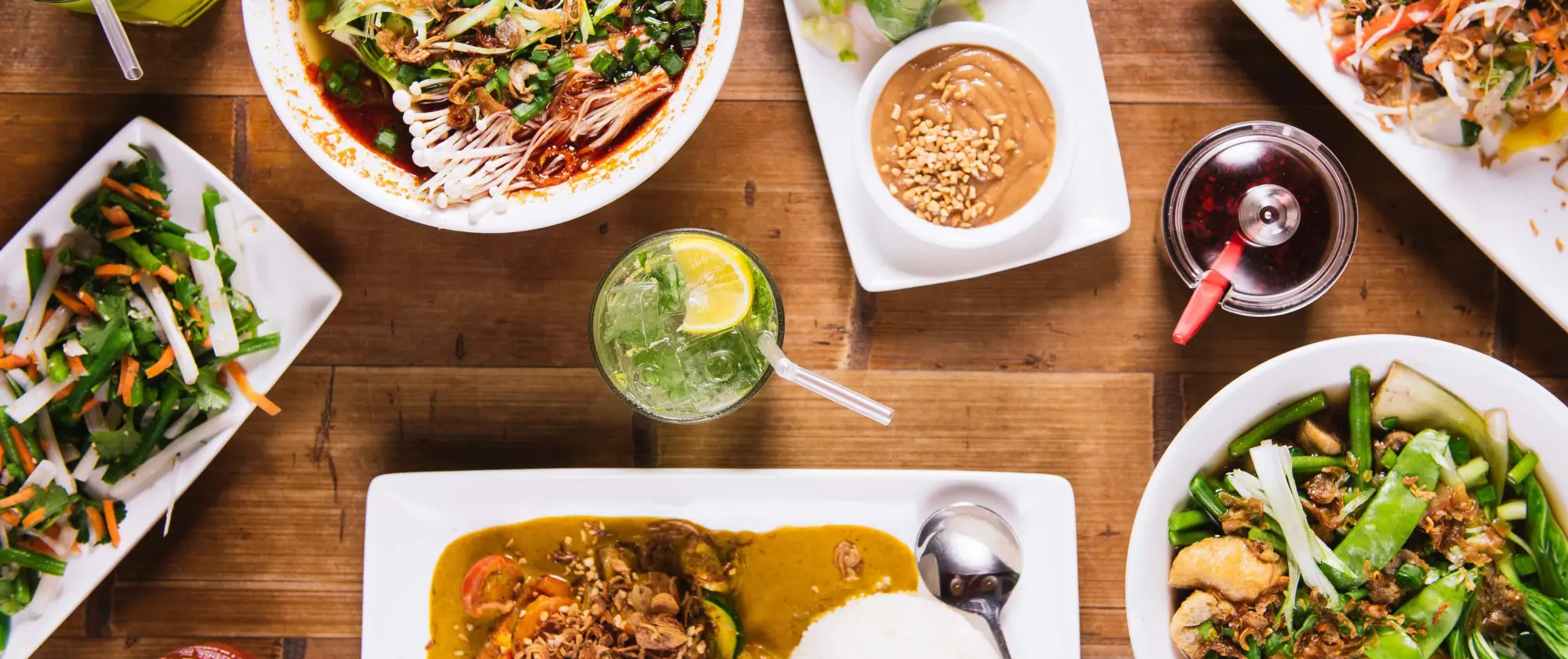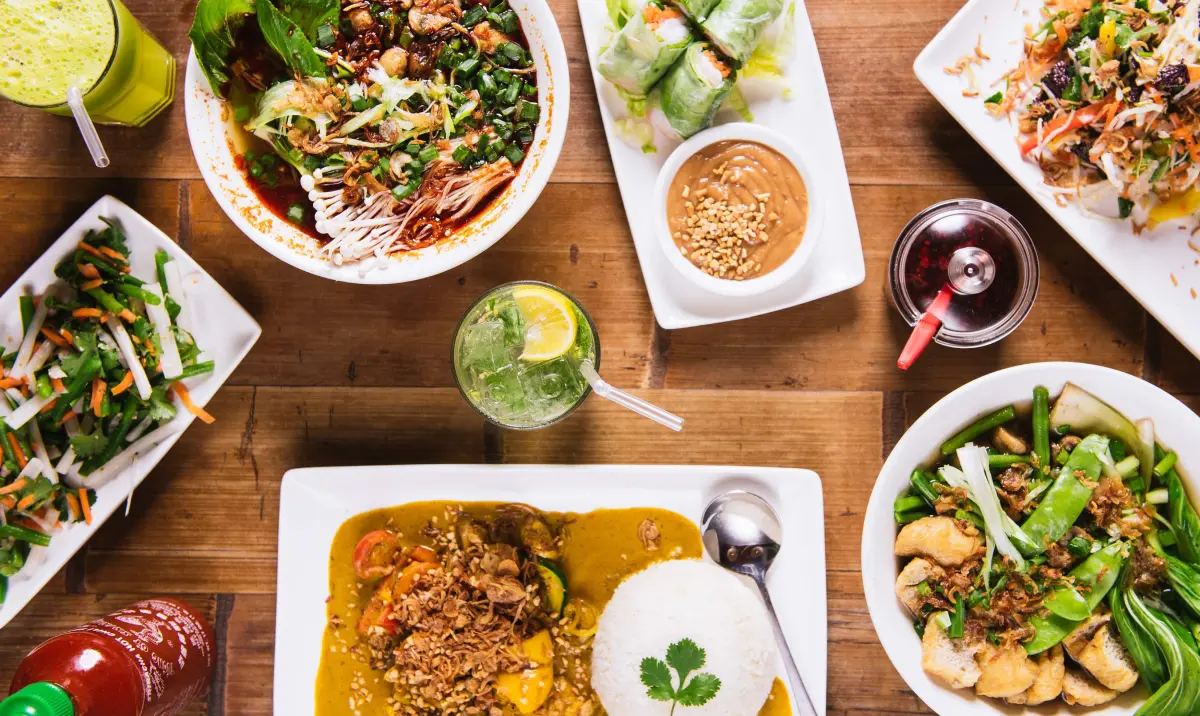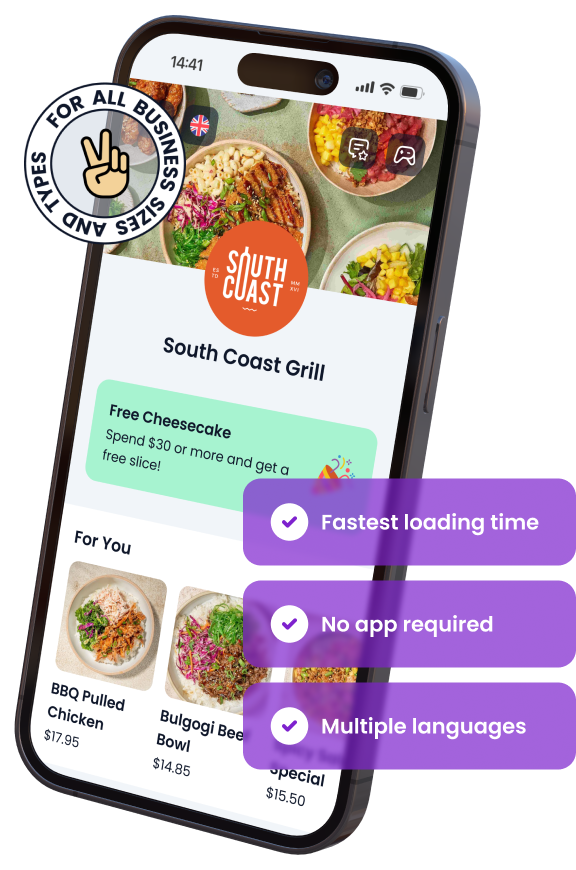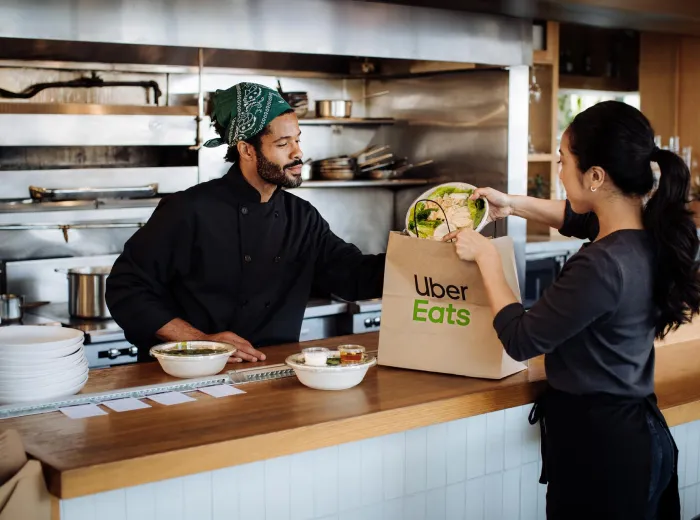

Vegan / Gluten-free Menu Ideas for Restaurants
As dietary preferences evolve, restaurants are increasingly embracing vegan and gluten-free options to cater to a growing and diverse customer base. Offering these specialty menu items is no longer just a trend but a vital strategy to remain competitive and inclusive. For many diners, these options are more than a preference—they’re a necessity due to dietary restrictions or lifestyle choices.
Creating a vegan or gluten-free menu might seem daunting at first, but it offers a remarkable opportunity to showcase creativity, enhance your restaurant’s appeal, and tap into new markets. By including thoughtfully crafted dishes, your establishment can attract health-conscious individuals, those with allergies or intolerances, and even groups where one diner’s preference influences the entire party’s choice.
In this guide, we’ll delve into actionable ideas and strategies to help you design and implement a menu that caters to vegan and gluten-free diners without compromising on flavor, nutrition, or presentation. Whether you’re adding a few new items or revamping your entire menu, this comprehensive resource is designed to inspire and guide you every step of the way.
Why Offer Vegan and Gluten-Free Options?
Meeting the needs of vegan and gluten-free diners goes beyond inclusivity; it’s a smart business strategy. These options not only cater to specific dietary requirements but also elevate your restaurant’s reputation, helping you stand out in a competitive market. By incorporating vegan and gluten-free dishes, you can attract a broader customer base, ensure higher customer satisfaction, and create a loyal following.
The Growing Demand for Specialty Diets
The demand for vegan and gluten-free options is steadily increasing as more people adopt these lifestyles for health, environmental, and ethical reasons. Statistics reveal significant growth in both markets:
- Vegan diets: Reports indicate that veganism has grown by over 600% globally in the last decade.
- Gluten-free diets: The global gluten-free market is projected to surpass $14 billion by 2026.
Why this matters: By responding to this demand, your restaurant positions itself as modern, forward-thinking, and customer-centric, appealing to the growing number of health-conscious diners.
Attracting a Wider Customer Base
Offering vegan and gluten-free options widens your restaurant’s appeal and brings in diverse groups of diners. Many patrons seek inclusive establishments where everyone at the table can enjoy a satisfying meal, including:
- Families with dietary restrictions.
- Friends or groups with mixed dietary preferences.
- Health-conscious customers seeking lighter or allergen-free options.
Why this matters: When one diner’s needs are met, the entire group is more likely to choose your restaurant, leading to increased reservations and foot traffic.
Competitive Advantages
Adding vegan and gluten-free items to your menu can differentiate your restaurant from competitors that lack such offerings. This strategic move enhances your brand’s reputation and highlights your commitment to meeting diverse customer needs.
Key competitive benefits include:
- Customer loyalty: Customers are more likely to return if their dietary needs are consistently accommodated.
- Social media visibility: Specialty dishes are highly shareable, boosting your online presence.
- Positive reviews: Inclusive menus often result in higher customer satisfaction and glowing reviews.
Why this matters: Staying ahead of trends and offering these options establishes your restaurant as a leader in innovation and customer care, giving you a lasting edge in the market.
Understanding Vegan and Gluten-Free Diets
To create a menu that caters to vegan and gluten-free diners, it’s essential to understand the principles of these diets. Knowing what they entail, their unique requirements, and the potential challenges will help you design dishes that meet expectations while maintaining flavor and creativity.
What is a Vegan Diet?
A vegan diet excludes all animal products, focusing instead on plant-based ingredients. This includes avoiding:
- Meat, poultry, and seafood.
- Dairy products such as milk, cheese, and butter.
- Eggs and egg-based products.
- Honey and any animal-derived additives (e.g., gelatin).
Vegans typically choose this lifestyle for health, environmental, or ethical reasons. It’s important to remember that vegan diners value creativity and variety, making it essential to go beyond basic salads or sides when crafting your vegan menu.
Why this matters: Offering diverse, well-balanced vegan dishes demonstrates your commitment to inclusivity and culinary innovation, appealing to this growing demographic.
What is a Gluten-Free Diet?
A gluten-free diet eliminates gluten, a protein found in wheat, barley, rye, and certain other grains. This diet is crucial for individuals with:
- Celiac disease: An autoimmune condition triggered by gluten.
- Gluten sensitivity: A less severe but still uncomfortable reaction to gluten.
- Wheat allergies: An allergic reaction that may include gluten or other wheat components.
Common sources of gluten to watch out for include:
- Bread, pasta, and baked goods made with wheat.
- Soy sauce, malt vinegar, and some processed foods.
- Hidden gluten in soups, sauces, or seasonings.
Why this matters: Ensuring your gluten-free options are truly safe and flavorful helps you build trust with this audience and positions your restaurant as a responsible choice for gluten-intolerant diners.
Key Overlaps and Differences
While vegan and gluten-free diets share some similarities, such as avoiding animal-derived gluten-containing foods like wheat-based broths, they differ in their restrictions. Understanding these distinctions is crucial for crafting inclusive dishes:
- Overlaps:
- Many fruits, vegetables, and legumes are suitable for both diets.
- Plant-based alternatives like almond milk or gluten-free oats can serve both needs.
- Differences:
- Vegan diets can include gluten-containing items like seitan or wheat flour.
- Gluten-free diets can include animal products like meat, eggs, and dairy.
Why this matters: Recognizing these overlaps and differences allows you to design flexible, dual-purpose menu items that cater to both dietary groups, maximizing your menu’s inclusivity and appeal.
How to Create a Vegan and Gluten-Free Menu
Designing a vegan and gluten-free menu involves careful planning, ingredient selection, and culinary creativity. It’s not just about removing certain ingredients; it’s about crafting dishes that are flavorful, nutritious, and satisfying. By sourcing the right products, balancing flavors, and offering versatile options, you can create a menu that delights a wide range of diners.
Sourcing Quality Ingredients
The foundation of any great menu lies in the quality of its ingredients. For vegan and gluten-free dishes, this step is particularly crucial.
- Find trusted suppliers:
- Partner with local farms for fresh, seasonal produce.
- Source certified gluten-free grains and flours.
- Look for certifications:
- Gluten-free certification for packaged products.
- Vegan labels to ensure no animal-derived components.
- Consider specialty items:
- Nutritional yeast for cheesy flavors.
- Aquafaba as an egg substitute in baking.
Why this matters: High-quality ingredients elevate the taste and safety of your dishes, ensuring they meet the expectations of discerning diners.
Balancing Nutrition and Flavor
Creating dishes that are both delicious and nutritious is key to impressing your guests. Vegan and gluten-free diets often require thoughtful ingredient combinations to provide essential nutrients.
- Protein sources:
- Include tofu, tempeh, quinoa, lentils, and beans for protein-rich options.
- Enhance flavors:
- Use herbs, spices, and citrus for bold flavors.
- Incorporate umami-rich ingredients like mushrooms and fermented foods.
- Balance textures:
- Combine creamy, crunchy, and chewy elements for satisfying dishes.
Why this matters: A well-balanced menu shows that you prioritize health and taste, creating a memorable dining experience for your guests.
Offering Versatile Menu Options
Versatility allows you to cater to multiple dietary needs without complicating your operations. Focus on dishes that can easily adapt to vegan or gluten-free requirements.
- Customizable dishes:
- Build-your-own grain bowls with gluten-free grains like quinoa and a variety of plant-based toppings.
- Offer pizza with gluten-free crust and vegan cheese.
- Dual-purpose ingredients:
- Use gluten-free, plant-based sauces for all menu items.
- Feature sides and appetizers suitable for both diets.
Why this matters: Versatile dishes streamline kitchen workflows and ensure more diners can find something they love, increasing overall satisfaction and repeat business.
Vegan Menu Ideas for Restaurants
Creating a diverse and appealing vegan menu involves incorporating plant-based ingredients into dishes that are flavorful, nutritious, and visually stunning. From breakfast to desserts, your vegan menu can be a standout feature that attracts health-conscious and ethical diners.
Breakfast and Brunch Ideas
Start the day with vibrant and nourishing vegan options that appeal to morning crowds.
- Smoothie bowls:
- Blend fresh fruits, plant-based milk, and superfoods like chia seeds.
- Top with gluten-free granola, coconut flakes, and seasonal fruits.
- Vegan pancakes:
- Use oat or almond flour and a banana-based batter.
- Serve with maple syrup, fresh berries, or vegan whipped cream.
- Tofu scramble:
- Season with turmeric and nutritional yeast for a scrambled egg alternative.
- Pair with roasted vegetables and whole-grain toast.
Why this matters: Offering a range of vegan breakfast options positions your restaurant as a versatile spot for all-day dining.
Lunch and Dinner Ideas
Expand your vegan menu with hearty, satisfying meals that leave guests impressed.
- Plant-based burgers:
- Use black beans, quinoa, or mushrooms for the patty.
- Offer gluten-free buns and vegan cheese as options.
- Grain bowls:
- Base with quinoa, brown rice, or gluten-free pasta.
- Top with roasted vegetables, chickpeas, and tahini dressing.
- Creative pasta dishes:
- Use gluten-free pasta and sauces like cashew-based Alfredo or tomato basil.
- Add plant-based proteins like lentil “meatballs” or tofu.
Why this matters: Providing filling, flavorful meals ensures vegan diners leave feeling satisfied and excited to return.
Dessert Ideas
End the meal on a sweet note with indulgent vegan desserts that rival traditional offerings.
- Coconut milk ice cream:
- Flavors like chocolate, mango, or matcha cater to diverse tastes.
- Serve with gluten-free brownies for a decadent treat.
- Vegan cheesecake:
- Use a cashew or tofu base for a creamy texture.
- Top with fresh berries, fruit compotes, or vegan chocolate drizzle.
- Energy bites:
- Combine dates, nuts, and cocoa powder for a healthy, gluten-free dessert option.
Why this matters: Offering desserts that cater to vegan diners showcases your attention to detail and completes their dining experience.
Gluten-Free Menu Ideas for Restaurants
Crafting a gluten-free menu requires creativity and a focus on providing flavorful alternatives to traditional dishes. By using gluten-free grains, flours, and substitutes, you can design meals that cater to gluten-sensitive diners while maintaining broad appeal.
Breakfast and Brunch Ideas
Morning menus are an excellent opportunity to include hearty and nutritious gluten-free options.
- Gluten-free waffles:
- Made with almond, rice, or buckwheat flour.
- Serve with fresh fruit, maple syrup, or nut butters.
- Egg-based dishes:
- Omelets or frittatas packed with seasonal vegetables.
- Pair with gluten-free toast or roasted potatoes.
- Smoothie bowls:
- Combine blended fruits, coconut milk, and toppings like chia seeds and gluten-free granola.
Why this matters: Providing gluten-free breakfast staples makes your restaurant a go-to choice for diners with dietary restrictions.
Lunch and Dinner Ideas
Offer a mix of classic dishes and creative gluten-free twists to cater to all palates.
- Grilled protein plates:
- Options like grilled chicken, tofu, or fish paired with gluten-free grains such as quinoa or wild rice.
- Accompany with steamed vegetables and gluten-free sauces.
- Gluten-free pasta dishes:
- Use rice or lentil-based pasta.
- Offer toppings like marinara, pesto, or creamy coconut-based sauces.
- Hearty soups and salads:
- Gluten-free soups like tomato bisque or lentil stew.
- Salads with gluten-free croutons, nuts, and flavorful dressings.
Why this matters: Including filling and diverse gluten-free mains ensures that diners with restrictions can still enjoy full, satisfying meals.
Dessert Ideas
Delight your gluten-free guests with indulgent desserts that don’t compromise on taste.
- Flourless chocolate cake:
- A rich and decadent option made with almond flour or no flour at all.
- Serve with whipped coconut cream or fresh berries.
- Gluten-free fruit crisps:
- Use gluten-free oats and almond flour for the topping.
- Combine with baked seasonal fruits like apples, peaches, or berries.
- Sorbet and gelato:
- Offer naturally gluten-free flavors like mango, raspberry, or dark chocolate.
Why this matters: Ending the meal with irresistible gluten-free desserts ensures your guests leave with a positive and lasting impression of your restaurant.
Best Practices for a Seamless Implementation
Introducing vegan and gluten-free menu options is not just about adding dishes—it’s about integrating these offerings seamlessly into your operations to ensure quality, safety, and customer satisfaction. By focusing on staff training, clear labeling, and adherence to safety protocols, you can create a smooth experience for your team and diners alike.
Training Your Staff
Your staff plays a crucial role in the successful implementation of vegan and gluten-free menu options. Proper training ensures they understand the importance of these offerings and can confidently communicate with customers.
- Educate about dietary requirements:
- Highlight the difference between vegan, vegetarian, and gluten-free diets.
- Teach the significance of avoiding cross-contamination.
- Provide cooking and serving guidelines:
- Use separate cookware, utensils, and prep areas for gluten-free items.
- Store vegan and gluten-free ingredients separately to prevent mix-ups.
- Encourage menu knowledge:
- Train staff to identify vegan and gluten-free dishes and recommend them to diners.
Why this matters: Well-trained staff enhance customer confidence and ensure that vegan and gluten-free diners feel safe and valued.
Labeling and Marketing
Clear and attractive labeling helps diners quickly identify vegan and gluten-free options, making your menu more accessible and appealing.
- Highlight menu items:
- Use universally recognized symbols (e.g., “V” for vegan, “GF” for gluten-free).
- Include detailed descriptions of ingredients and preparation methods.
- Create dedicated sections:
- Feature a separate section for vegan and gluten-free dishes to streamline choices.
- Promote on marketing channels:
- Advertise new menu items on your website and social media.
- Use hashtags and engage with vegan and gluten-free communities online.
Why this matters: Effective labeling and promotion make it easier for diners to choose your restaurant, boosting both sales and customer satisfaction.
Ensuring Safety and Compliance
Maintaining safety and adhering to dietary requirements are critical for protecting your diners and your reputation.
- Avoid cross-contamination:
- Use dedicated cooking stations, cutting boards, and utensils for gluten-free dishes.
- Label ingredients and storage containers clearly to prevent mix-ups.
- Stay updated with regulations:
- Comply with local food safety guidelines for allergen management.
- Verify the gluten-free certification of packaged ingredients.
- Regularly review processes:
- Conduct routine audits to ensure compliance.
- Seek feedback from customers to address any gaps.
Why this matters: Prioritizing safety and compliance builds trust with your diners and minimizes the risk of complaints or legal issues.
By implementing these best practices, your restaurant can effectively cater to vegan and gluten-free diners, creating an exceptional dining experience for everyone.
How to Promote Your Vegan and Gluten-Free Menu
Effectively marketing your vegan and gluten-free menu is essential for reaching the right audience and increasing sales. By leveraging social media, collaborating with influencers, and encouraging customer feedback, you can create a buzz around your offerings and attract new diners.
Leveraging Social Media
Social media platforms are a powerful tool for showcasing your vegan and gluten-free dishes, reaching a wide audience, and driving engagement.
- Share visually appealing photos:
- Post high-quality images of your dishes with vibrant colors and inviting presentation.
- Use natural lighting and styled plating for maximum impact.
- Engage with your audience:
- Respond to comments and messages from followers who inquire about your vegan and gluten-free menu.
- Use polls or question stickers on Instagram Stories to gather feedback or ideas.
- Promote with hashtags:
- Include trending hashtags like #VeganEats, #GlutenFreeDining, or #PlantBasedOptions.
- Tag local vegan and gluten-free communities to expand your reach.
Why this matters: A strong social media presence keeps your restaurant top-of-mind and positions it as a destination for vegan and gluten-free dining.
Partnering with Influencers
Collaborating with influencers in the vegan and gluten-free space can significantly boost your visibility and credibility.
- Identify relevant influencers:
- Look for local vegan or gluten-free bloggers, vloggers, or food critics with engaged audiences.
- Ensure their values align with your brand to maintain authenticity.
- Offer exclusive experiences:
- Host influencer events where they can sample your menu.
- Provide them with free dishes to review and share on their platforms.
- Encourage genuine content:
- Allow influencers to share their honest experiences, building trust with their audience.
Why this matters: Influencers can introduce your restaurant to new audiences and generate excitement around your vegan and gluten-free offerings.
Encouraging Customer Feedback
Customer feedback is invaluable for refining your menu and generating positive word-of-mouth marketing.
- Incentivize reviews:
- Offer discounts or small rewards for customers who leave reviews on platforms like Google, Yelp, or TripAdvisor.
- Highlight the importance of sharing their vegan or gluten-free dining experiences.
- Create a feedback loop:
- Provide comment cards in the restaurant or an online form for suggestions.
- Act on constructive feedback to improve dishes or service.
- Showcase testimonials:
- Share positive reviews and testimonials on your website and social media.
- Feature customer quotes in marketing materials.
Why this matters: Engaged and satisfied customers are more likely to recommend your restaurant, helping to grow your reputation and customer base.
By implementing these promotional strategies, you can effectively market your vegan and gluten-free menu, attract new diners, and foster loyalty among existing customers.
Key Takeaways
Offering a vegan and gluten-free menu is not just a trend—it’s a valuable strategy to expand your customer base, enhance your brand, and meet the growing demand for inclusive dining options. Here are the key points to remember:
- Understand your audience: Recognize the motivations and needs of vegan and gluten-free diners, and design dishes that cater to their preferences without compromising flavor or quality.
- Prioritize ingredient quality: Source certified vegan and gluten-free ingredients to ensure safety, compliance, and superior taste.
- Train your staff: Equip your team with the knowledge and tools needed to prevent cross-contamination and confidently recommend menu items.
- Leverage versatility: Create dishes that cater to multiple dietary preferences, making it easier to appeal to diverse groups.
- Market effectively: Use social media, influencer collaborations, and customer reviews to promote your menu and attract attention from target audiences.
- Commit to continuous improvement: Regularly gather feedback and refine your offerings to stay competitive and meet evolving customer expectations.
By embracing these practices, your restaurant can become a go-to destination for vegan and gluten-free diners, setting your business apart in a competitive market. With the right strategy and commitment, inclusivity can be a recipe for long-term success.
ABOUT THE AUTHOR
Erkin Coban
Your Customers Deserve The Best
And we got Menuviel for them.
The fastest and easy-to-use online QR menu with 12+ unique features. Choose Menuviel and elevate your service quality to the next level.
Use free for the first 30 days.

In This Article

Free AI Tools for Restaurants
TRY NOW ➜

Add allergen and dietary badges
Enhance your customers’ dining experience by providing clear dietary badges and labels for each menu item.





